#Ramayama
Text
Monkey Man and why I loved the heck out of it

At it's core, it's a Bollywood flick presented to the West with familiar nods to previous action films - I definitely picked up hints of Tony Jaa's influence on Asian action flicks throughout.
It's heavily focused on police corruption, something commented a lot about in India, and here, more importantly, Indian films. Just like America has its love affair with mobster flicks, Bollywood has a long history featuring films that showcase police corruption, sometimes tied into political extremism, fanatical or greedy religious leaders, and Monkey Man comments on all this as well and pays nods to that commonality. We've got televangelists and religious leaders in the states funnelling money, preaching prosperity gospel, and using it to influence politics and fund lavish lifestyles here.
Monkey Man shows this happening in India, and is filled with Indian culture and symbolism through out. The focus on Hanuman, the god and one worshiped by the strong, chaste, wrestlers, champions, and fighters. It's a common thing to have a household deity if you will. Some families might choose to focus worship on Ganesh, others Hanuman, some might do Mata Rani or Lakshmi. Here, it's the divine Vanara (monkey people race) - one of the Chiranjivi - immortals/forever-lived.
Hanuman. Themes of rebirth, common in South Asian history and mythology are present from Kid being a ringer, beat up fighter getting whooped for money to being reborn and facing his trauma through a ritual/meditate process that I don't want to get too much into to not spoil the movie. Post that, he begins his own self alchemy to really become the true Monkey Man. Nods to Ramayama, and an unapologetically Indian story featuring dialogues throughout in Hindi - don't worry, there are subtitles.
And of course a love for action flicks before it, all the way back to Bruce Lee. A beautiful use tbh of an autorickshaw (and you might know them as tuk-tuks in Thailand) which are popular in India with an added kick...I swear, that thing had to be modified with a hayabusa motor. Which is an actual thing people do - modding those dinky rickshaws with motorcycle engines, and considering they weigh nothing at all, they can REALLY FLY once you do that.
Monkey Man brings to the big screen other elements of India people might not know about, such as the gender non conforming and trans community that has a long history in India, presenting them as action stars as they go up against a system of corrupt elites oppressing part of the city, marginalized communities, and minority voices as depicted in the film. I'm not sure if people are going to get all of that without having the context, but I love that it does it without holding anyone's hands.
It's a fun action flick to see in the age of superhero films, and I say that as an obvious superhero/sff nerd. Also loved that Dev included a little bit about Hanuman's own story in the film, and the loss of his powers - almost mirrored by Kid's own loss of self/skills, strength until he confronts his trauma and is reborn, and in fact, remade (not necessarily the same). Also, the use of music was brilliant, including one scene with a tabla (the paired hand drums of south asia) - and Indian music is central to Indian stories.
This is a culture with evidence going back to the Paleolithic with cave murals showing art of Indian dance nearly 30,000 years ago. Yeah, that far back. As well as Mesolithic period art depicting musical instruments such as gongs, lyres, and more.
Indian music is some of the earliest we can find that has high developed beat and rhythm structures such as 5, 7, 9 and now the extremely common and known 4/4 and 3/4 - which so much of Western music is built upon. The foundations and experimentation of/in Jazz. John Coltrane and John Cage were heavily inspired by Indian music and incorporated a lot from it into their works. And Monkey Man blends Eastern and Western music through the narrative as comfortably as it does an Indian story in a very familiar Western accessible structure.
Dev did a wonderful job. And thanks to Jordan Peele for bringing it to screens.
#monkey man#jordan peele#dev patel#Bollywood#bollywood movies#Indian films#indian culture#India#hanuman#ganesh#south asian#Ramayama#superhero#superhero films#Indian music#bollywood songs#loved this film#great film#love this movie#john coltrane#John Cage#Jazz#music soundtrack#films#movies#movie review
38 notes
·
View notes
Video
youtube
UN CLAVO SACA OTRO CLAVO-PEDRO RAMAYAMAS MUSICA
0 notes
Text
#Spinza Elecztrcal Turn -der Rätsel Löungen
#Spinoza Electrical Turn. EnLIGFHT²ment "Auge des Geistes"(Gueroult,Moreau, Wetlesen) Das Köper Geist Problem (Elektromgnisches LichT - IMGINATION - ist "C'oup d'oeil Ebene" für die intellektuellen VERSTEHENSakte, per ewige² Wahrheiten² more gemetrico Beweise geordnet wie die DINGE verkette sind. ALL²wissen statt SKEPSIS, ALL²zuMENSCH-lich (selbst Kant transzendetal). UNVERSUMSfeldkräfteWISSENSCHAFT. "MetaSTABIL" EWIG SELBST bewusstSEINmachBAR (BARUCH; SAT-CHIT-ANANDA TANTRsex; EWIGES WEISEr SEIN EVP42S)!!
Das Leben ist ekrtoCHEMIsch (BEFREINUBG der PRDUKTIVkäfe ELKTRIK; WISSENMSCHAFT - ELKRTFIZUIERUNG plusSOWJETmach "SELBTTwerdung") VULGO BIOCHMISCH
RadioAKRVIÄTIST dagegen!! der Tod(Yama) - AUS der NervenSTRÖME reichT FÜR MENSCHEN!!
für DIE ArbeiterBEWEGUING SowjertGEFALLEN Mao-Versteher,
ENT-STALINisierer; MARX-TROTZKISMUS stabilen - #Spinoza-STRUKTARLISTEN jetzt: :
Elektrik statt Dialektik
Wo Elektrochemie (Materialismus!!) WAR
SOLL
ElektroMAGNETISMUS (Idealismus) (Lumen Naturale für die "Auge des Geistes" mit RELIGIONSfolge weltweit.
sein!!
GEDACHNTIS statt KÖPR-GEIST-WECHSELWIRKUNG
und FREIEE WILLE ILLUSION
DETERRMISMUS ist die NOTWENDIGKEIT der EWGEwahreten BEWISORDUNG der DINGE
als TONbanbdGERÄT DIGTALfilm²AUFZEICHNUNG(²ANTI_ÖDIPUS)
mit tONspur (SINN
zusammen IMGINATION..
EWIGKLETSperspektive INTELlEKT mor geomertrco BEIWISE per EWIGE WAHRHEIT FOLGEbeziehung - asl TEIL GANZES BOOLschre MENGENalgebra BOOLSCHD PRÄDIKATENlogik "modellierbar" - geamte MINT Fächer dabei,
PSYCHOphysiolgie, PSY und NERO Fächer dabei -ASSOZISAGTONSpsychpolge DRIUCH-ELKRTOCHMIE-LUST_SCHMERZ TANTRsex LÖSUNG KOHGNITIONSpsychologie
hier STIRNband C'oup d'OEIL GLÜCKSgriff - bestimzt nicht nur ICH WERDE MASSIVST KRIMNEL SCVHWAZ MAGIOSCH ILLUMNATEkopie GESTÖRT, BEKÄMPFT!!!
bei der ERST - TANTRAsex #Spinoza VERvollständigung!!
FAKIR (Sufi, FDDerwisch( ; KUNDaLINI (Indien) TANTRsedx pATSANJALI KRIY YOGAS SUTRADS: TAPAS ; RAMAyama "wilder AFFE" vernunftLETEN drkLEINhinant SCHRktafAFFEKTE AFFEKTE chaotischer²³ ATTRAKTOR²³ Gehirndynmik
S&M Hintern²³ versohlen²³ ANTI-ELEPILETISCH²³?(auch KORAN!!) Buddhismus! antPSYCHOPaTHlogsch(antiHysterisch antiPsychotsich! antiNeurotsch "CHAOSMOSE" Guattari nicht so "konkrete Regeln" )
anti HALLZUNMsatrische WUNSCHerfülllung!!
mit TRIEB; LUST; UNLUST; "WUNSCHmaschnen"(ANTI-ÖDIPUS) und EWIGER INZEKKT INHGENIUM! USUS (HWONHETEN) und FORTuna ('Spimnza, Moreau Conslusion) ("wie von einemn GEIST geleitet" KOLLEKTIVE)
0 notes
Video
youtube
Don Omar, Farruko - Ramayama
“Luz con olor, siento el color
Haciendo espacio en mi interior
Hoy me acompaña mi artesanía
Ramayama de noche y día
Viendo el horizonte, donde el sol se esconde
Relaja'o, quemando tiempo pasado
Y apreciando lo que el presente responde
Bien tira'o con los ojos colora'o
No hay ocio sin espacio
Para meditar y aprender lo que enriquece el alma
El conocimiento vuelve sabio
Palabras con luz que prenden”
0 notes
Text
The Yoga Sutras and Jyotish
Hari Om
~~~~~
Namaste,
The Yoga Sutras (some call Yoga Darśana) of Patanjali muni have been discussed on a another post. I thought to add this post on the correlation of his works by chapter and their significance from a Jyotish perspective.
The Yoga Sutras has 4 chapters:
Samadhi pada
Sadhana pada
Vibuthi pada
Kevala pada
It is of great interest to me that these are laid out sequentially and there are 4 chapters. Why not a triad, the traditional 3 that has multiple meanings thought-out Vedic literature? Or why not 5 padas? Let see how this unfolds.
Samadhi pada
The first chapter is aligned with the 1st house of the birth chart. The karaka of the 1st house is the Sun (surya) and is the natural Atmakaraka ( indicator of the Atman, soul) and is all about brightness, the Atman, etc. The 1st house is also a dharma house. The alignment of ultimate dharma is that of Moksha and it is with the light of Surya that it begins.
Within Patanjali's 1st chapter he discusses the natural state of the sadhu and how the seer abides in Itself.
The Seer is pure consciousness and when the Seer abides in itself there is liberation for the sadhu ( sutra 1.3 is being referenced here). Like the 1st house of ones jama-kundali ( birth chart), it is the Atman abiding in Itself and recognized itSELF that brings kevalya. A nice alignment of Patanjali-ji with Jyotish principles.
Sadhana pada
The 2nd chapter of Patanjali has much to do with practice. That is tapas, svadhya, Ῑśvara pranidhāna i.e. kriyā yoga. This whole 2nd chapter aligns nicely to the 2nd bhava ( house) for learning, welfare, and self efforts. The wealth from tapas and self effort is gained.
The 2nd house is an Artha house, one of wealth. We think of monetary wealth, yet along the way to kevalya, spiritual wealth plays more and more of a role in ones life. The karaka of the 2nd house is Jupiter ( Guru). He is associated with gains, learning, achievements, religion no doubt, intelligence the association with a guru, and control over the senses.
Vibuthi pada
The 3rd chapter is about siddhi and the method of samyama. Note that this comes 3rd. After establishing a firm foundation of discipline and understanding who the seer really is, the various practices, found in chapters 1 and 2. But what is interesting to me is why Patanjali chose to call the 3rd chapter Vibhuthi pada.
We know vibhuthi as sacred ash used on the forehead (tilaka). This vibhuthi or विभूति is also the manifestation of might , superhuman ability, and successful issue. This is why Patanjali picked this as the name for his 3rd chapter. It is with siddhi that success and the manifestation of new abilities arise.
The 3rd house has many indications, it is a house of strength, patience and perseverance. It’s a house of advancement which aligns to the development of siddhis. This house is a kama house, that of desires, and fulfilling them. It is by our siddhi (skill in action) in our present level of being that we too fulfill desires.
The karkaka of the 3rd house is Mars. Mars is courage. Mars is also Hanumanji. We hear of Hanumanji's siddhi performance in the Ramayama with Sri Ram, and also in the Mahabharata e.g. becoming large and small, going up to and touching the sun, flying and/or jumping large distances such as to Sri Lanka. Hanumanji owned these abilities, these siddhis and used them accordingly.
Kevala pada
The 4th chapter is all about Kevela or Liberation. How one is liberated even in this lifetime. As is the 4th house in ones chart it is the 1st moksha house ( or bhava) found in the chart and is repeated in the 8th and the 12th bhavas (houses).
The 4th chapter is the result of what takes place in the 1st, 2nd, and 3rd chapters. Now the 4th house is a natural Moksha ( Liberation) house. The natural Moksha-karaka is Ketu. The one with no head. People also associate Ganesha with Ketu, as he too had his head cut off ( that of mundane life, the ego, all that) and Ganesha being associated with Moksha.
The 4th house is also a house of the home, owned by Moon (Chandra). Like Moksha, the native is coming home to who he/she really is, the seer, pure consciousness. The 4th house associated with Moon and home, is therefore also associated with peace of mind (moon) at home. I have been told that when one resides in kevalya, all places one may travel is like being at home, because home now resides in you.
Via Moksha, peace of mind is steady and resides in the SELF. The 4th house is also considered the 'throne of judgment' as it receives rasi dristi from the highest point in the chart, that of the 10th house, where the sun at its highest point in the day resides and gives rasi dristi to the 4th house.
Now in Patanjali's 4th chapter, His key sutra ( for me) is 4.25. for one who has realized the distinctive specialty of Purusa ( the SELF) the search for the nature of his SELF ceases. That is, the sadhu has then arrived.
Patanjali then says in sutra 4.29 - On being dis-interested even in omniscience acquired through discriminative knowledge, the all-round discriminative knowledge that ensues, brings about the level of Being known as dharma mega ( or cloud pouring virtue).
This is to say, the sadhu is secure in him-herSELF. This is no appetite for siddhis, for even omniscience, due to all the latent impressions (vasanas) being destroyed like a seed roasted in a fire (Patanjali's metaphor from a few chapters back).
So, with the 4th house ( Moksha bhava) and the 4th Chapter (Kevala pada) the sadhu reaches the source, and brings peace and fullness (Bhuma) to him/herself.
It is with the four aims of life Dharma, Artha, Kama and Moksha that the brilliance of Patanjali shines though. It is these 4 goals that the birth chart is also composed of: 3 Dharma + 3 Artha + 3 Kama +3 Moksha = 12 bhava or 12 houses in ones chart. Now , why 3? ... perhaps it shows past, present and future.
pranams
All the Powers of the Universe are already ours; It is We who have put our hands before our eyes and cry that it is Dark! - Vivekananda muni
0 notes
Video
LA MENTE CLARA Y LA CERVEZA OSCURA!⚡️♠️🍺
#beer#Beers#quarantineonlineparty#quarantineparty#selfie#ramayama#reggaeton#reggae#music#night#negro#black
1 note
·
View note
Text
So, this thread is for @Spirited_Gal , who is a wonderful person & author. She reached out curious about Asian storytelling structures and techniques, then links to South Asian ones. This became a convo about native/common/historical structures/styles/techniques from South Asia.
So, let's get into some loosely (just to make y'all aware, without turning this into an academic essay because it easily can - but I do not have time for that, and am not being paid for that writing, and it could be a lot when fully fully fleshed out).
Katha | Kathya: this is an Indian style of storytelling rooted in religious stories (mythology) - the performances are ritual events in Hindiusm. Sikhism holds a different take on it but somewhat related in that there is a focus on religious discourse, taking things apart, -
questioning meaning/interpretations, & then using this to teach scriptures for a moral/religious education - directing beliefs & practices. But the purpose regardless when reduced to the simplest is the same: the moral/religious education & impartation of societal good values to people through the stories.
Usually the stories and this style are performed with a class of people who are both priests and narrators (narrators/storytellers have a massively important role in South Asian culture that they cannot be understated and undervalued, especially-
considering so much of the religious history | myths, epics/stories were orally performed and passed down. Aural (listening/hearing) pleasure are just as important as music and song and dance accompany these performances, and couplets, hymns are common as well.
Anyways, Katha is its own style focused on the religious epics like Ramayama. These stories as mentioned feature a storyteller proficient in classic music, oration, accompanied by dance/song at times, and involve story digression points - if that sounds familiar :throws copy of The First Binding at your face (lovingly).
This particular style is called: Kathakalakshepa.
Another style of Katha is: Purana-Pravachan - built on/around expounding the Puranas, a vast collection of folklore, stories, poems, legends, and more. They are heavily layered with-
deep symbolism, diverse, incorporation tales of all sorts including sciences and topics like cosmology and cosmogony (not the same). This style focuses on the spiritual interpretation of these stories while reciting them.
Folk Narratives (and I have another thread on specific ones such as Panchatantra and Jataka tales which I have talked about and have been argued by some experts to contribute | inspired to 30-50 percent of western nursery tales, ballads, "fairy" tales, as well as some (some not all, not many) middle eastern ones. Some. These are usually narrated with drumming and bow-string instruments. You might see more of these in future Tremaine novels. Perhaps even book two <.<
One of the most common type of story within the folk narrative is particularly - the heroic ballad.
Another specific style here is the Burra Katha - an oral storytelling technique that comes from the Jangam Katha (an order of religious monks associated with Shiva). It incorporates many of things I've mentioned before: prayer, drama, dance, songs, poems, humor (lewd and tame), and usually focuses on mythological stories, or interpretations to focus on modern social issues. Interesting fact, Burra refers to tambura - a stringed instrument with a hollow shell. In Telegu, the word Burra means brain. The shell of the instrument so resembles a human skull (metal! or...gothic. w.e.), it's made of baked clay, pumpkins, or soft metals like brass/copper. In this style, the narrator doesn't just narrate, they play the instrument and dances to the music. South Asia has very little just tell a story traditions.
They're all performances. You will move, you will dance, you will evoke, sing, riddles, lessons, so on. :Gestures to Ari:
Okay - that's it that I want to talk about Katha (yep one tradition/style with varied structures). Just one...see how diverse it gets.
NOW, CLASS:
Kirtan | Keertan: It's narrating, reciting, telling or describing a story or an idea. Wait isn't that the same? No. Because it's a genre of religious performance arts but you're not necessarily breaking down a religious epic/myth a certain way. Instead, you are focused on the
performance of them, many times in a group, with multiple singers, each of whom recite/focus on the name of a specific deity, or a legend, and then you perform that part, very heavy on emoting, evoking that aspect to the audience, the romance, the heroism, and then use multiple singers to discuss that. This particular style is built to engage the audience.
You bring the audience in on the chanting, on the songs, or reply to the singers. You're not lecturing and teaching a moral/spiritual education here. You're performing them and involving the crowd
That IS different. This is a collective performance. Just because you might cover similar topics as Katha, for example, doesn't mean it's the same thing.
That's like saying anything involving a four chord progression is the same (I know someone musicy will bring up a joke about how...yeah they're all the same. I KNOW WHERE YOU'RE GOING WITH THAT BUT YOU KNOW WHAT I MEAN. CHILLLLL).
Anyways, what specifically makes Kirtan different is the fact that it's not required to be educational, and it's focused on shared performances. Katha can be performed by ONE person.
Kirtan again is commonly a call-and-response style performance.
I've already talked about Puranas and Jatka Tales and Panchatantra before (you can look those up in my other thread). Also styles of storytelling because of what they entail in their collections, diversity of topics, and varied styles between them in the presentation. They're not just "works" but it's how they're collected/presented and what they cover. That matters.
Hitopadesha: Beneficial Advice. This is an Indian text, written in, as you can imagine, Sanskrit. It's compromised of fables with human and animal characters and focuses on, you guessed it, imparting advice - maxims, so on. Things involving political affairs, life advice, and is delivered in simple and elegant language. It is said in fact to actually predate the Panchatantra (which I've shared is already one of the oldest things out of there. This is said at times to be the Panchatantra before Panchatantra )
The argued point of this particularly story and its structure of being four books, really, is to both encourage the proficiency of people reading it in Sanskrit expression (writing, poetry, more), and imparting wisdom/good behavior. Note, this is not focused on religious/ mythological connections. These are some of the oldest folklore/folktale/fable style stories. You can convey lessons/wisdom/life advice without a religious epic. Though, note, religious figures DO appear and can in this style. Some examples from within:
Book one: (Translated title) How to gain a friend (some of y'all might need this with how you behave online). It begins with a statement on how the wise and sincere friends might often appear poor or destitute, however, they are the ones who more often/earnestly help one achieve true success in life. It focuses on finding friends of good quality, doing this through many particular animal stories such as: The traveler and the tiger. Or, the deer, the jackal, and the crow. The old man & his young wife. The huntsman, deer, the boar, & the serpent & jackal.
Frame Narrative: I think I've talked about this one so much it'll be mildly depressing if I have to really break this one down. But, ahem. Sandwich narrative, kind of self explanatory. Story (or stories) within a story. You have a main narrative and or narrator (hi Ari) set the stage for more emphasized and secondary narratives within (going as deeply layered as you want). The legendary South Asian epic, Mahabharta is the earliest example of Frame Narratives we have, along with Ramayama, Panchatantra, The Seven Wise Masters, and Vikram Vetala (or Vikram the Vampire oh yes, Indian Vampire - technically flesh eating demon, long story. HA. GEDDIT?). Anyways some other examples from other cultures are: 1,001 Nights, The Decameron, and Canterbury Tales. Parts of the Odyssey employ this too, the beginning, where Odysseus tells of his time in the court of King Alcinous.
Mary Shelley's, Frankenstein, has multiple framed narratives in it. Neil Gaiman's used it in parts of Sandman. But we're getting away from the South Asian history/roots.
Next:
Qissa | Kisse | Kissa (NOTE: This is not solely an Indian origin, but a fusion that comes out of Islamic/Persian heritage that developed a different localized form to Punjabi and Bangladeshi people once introduced and changed for them through migration). The word Qissa is Arabic for epic legend or folk tale. It's regularly common in Indo-Aryan languages like Punjabi, Hindi, Urdu, so on.
You can also translate it as: interesting story (which is a whole own genre - something that has led me to butting some heads with people in the biz when I explain YOU DO NOT NEED TO HAVE A STANDARD PLOT STRUCTURE FROM THE WEST. SCREAMS. :Jabs at one piece, an epic adventure fiction with a numinous goal still in the distance after 20 years, but strung together with tightly woven character driven and location arcs - it quite literally follows the history of great, grand, ADVENTURE fiction, promising more than anything, a great adventure story in pursuit of a goal. The end).
Anyways, I digress.
Punjabi Qisse/Kisse focuses on stories of love, passion, betrayal, and sometimes a common man's revolt against a larger system. Stories of friendship, loyalty, love. These are usually sung and performed. Poetry forms of this are VERY common (through all the mentioned cultures above, not just Punjabi). The Bengali style is similar (as obvy both evolved out of the Arabic tradition), just focusing more on Bengali culture and stories. They are all UTTERLY beautiful.
If you've read Tales of Tremaine (and wait for book two) you will catch these themes and notes as well.
It's almost like that series is trying to smash and share every freaking kind of storytelling technique and tradition I can from along the silk road because...there isn't one of those (golden road) in the book. Oh, wait. :blinks:
Kavya: This is a particular style of utterly beautiful poetry performed by court poets. It's a blend of prose and poetry focusing specifically on the flowery/hyperbolic uses of figures of speech, metaphors, and similes.
Sometimes you'll have pieces flowing through normalized prose and poetry in and out. That is NOT required in that specific way. It's just something that happens/can be done.
There is a very specific intentional use of that in the chapter, Brahm, in The First Binding, in where there is a creation/cosmogony story, performed in normalized prose, rhyming couplets and quatrains, with a mini section in verse.
That section is not actually Kavya, just inspired, as it is not a court epic, more drawing from the other requirement of a "short" lyrical work with those aspects I mentioned above.
There is Bhakti poetry: a specific poetic tradition from the 6th century focusing on celebrating the love and devotion for Hindu gods - showing one's mystical devotion to a god. It's devotional and religious, also focusing on condemning evils, promoting egalitarian values, transcending ideas of caste, gender, and restrictions. It hinges upon message of love.
Dastan: Is an Urdu storytelling tradition focused on epic tales of adventure, romance, chivalry (note, not only pakistani/urdu, other islamic cultures use this style). It is performed both orally and in written format.
This whole thread is JUST A PRIMER.
If you are interested, please take the time to go do a proper deep dive.
#poetry#books#book lore#folklore#folktale#folktales#Dastan#Bhakti#Punjabi#Mary Shelley#Frankenstein#Hitopadesha#katha#kathya#south asia#southeast asia#storytelling#traditions#history#storytelling techniques#writing techniques#writing craft#writers on tumblr#writer and poets#poems#poets on tumblr#narratives#narrators#writing#mythological stories
0 notes
Photo

"Nothing except change is permanent in our lives, and nothing but death is final in this world. Death walks at our side on every trail; he wrinkles our skin and turns our hair white. We delight in each sunrise and sunset, and forget that our lives are shortened by everyone. Th seasons come, each with its own allurements; but they take great slices of our lives with them" #Ramayama #yoga #yogaeveryday #yogaeverydamday #meditation #death #loge #foodforthought #love #ram #sita #ramsita https://www.instagram.com/p/CANxPNbj0tT/?igshid=1c25poxd1jcw4
#ramayama#yoga#yogaeveryday#yogaeverydamday#meditation#death#loge#foodforthought#love#ram#sita#ramsita
0 notes
Photo
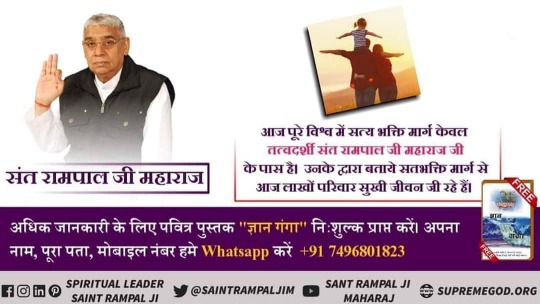
वेद में लिखा है कि पूर्ण परमात्मा मर चुके हुए साधक को भी जीवित करके 100 वर्ष तक जीने की शक्ति भी दे सकता है। संत रामपाल जी महाराज ऐसी ही सतभक्ति बताते हैं।अवश्य देखिए श्रद्धा टीवी सुबह 6:00 बजे से 7:00 बजे तक।। #सतभक्ति_से _दुख_दूर #सतभक्ति_से_अद्भुत_लाभ #satlok_ashram_news #india #kanha #vishnudada #krishnan #ramayama #kabir_is_god (at Baloda Bazar District) https://www.instagram.com/p/CAGHhZ7FJno/?igshid=4gzkdso2lwcd
#सतभक्ति_से#सतभक्ति_से_अद्भुत_लाभ#satlok_ashram_news#india#kanha#vishnudada#krishnan#ramayama#kabir_is_god
0 notes
Photo
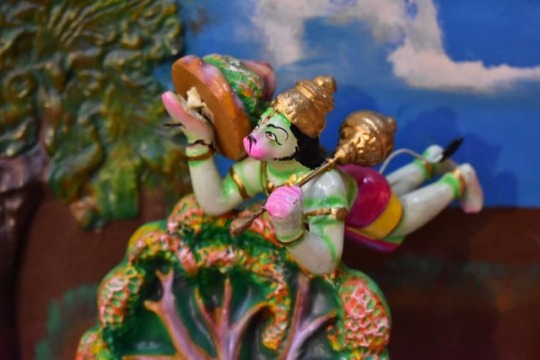
I pray to goddess Durga that we find a super hero like Hanuman who can vanquish our anxieties, help us conquer our fears and subdue the evil within, sometimes with an antidote or just by his presence alone. Wishing you all a very happy Vijayadashami. Shubho Bijoya and a happy Dussera. Happiness, peace,.health and prosperity to all. #dussera #vijayadashami #india #festival #hindu #karnataka #gods #tradition #culture #superhero #hanuman #anjaneya #hanumanta #sanjeevani #needanantidoteforanxiety #hefliesyo #ramayama #indianmythology #epic (at Bharatiya Vidya Bhavan) https://www.instagram.com/p/B3XvYGsFZ_j/?igshid=13dvx2u23ptme
#dussera#vijayadashami#india#festival#hindu#karnataka#gods#tradition#culture#superhero#hanuman#anjaneya#hanumanta#sanjeevani#needanantidoteforanxiety#hefliesyo#ramayama#indianmythology#epic
0 notes
Photo

#BeHappy ✌️ 😬 Lo único que falta es el #Ramayama 🤣. . #dannyzambrano #conectado2.0 ♻️ #fuerteventura #islacanarias #canarianislands #vacaciones2019 #beach #playa #sol #arena (en La Escalera) https://www.instagram.com/p/B2Z7qF7oJUv/?igshid=zo1lui51ub1p
#behappy#ramayama#dannyzambrano#conectado2#fuerteventura#islacanarias#canarianislands#vacaciones2019#beach#playa#sol#arena
0 notes
Text
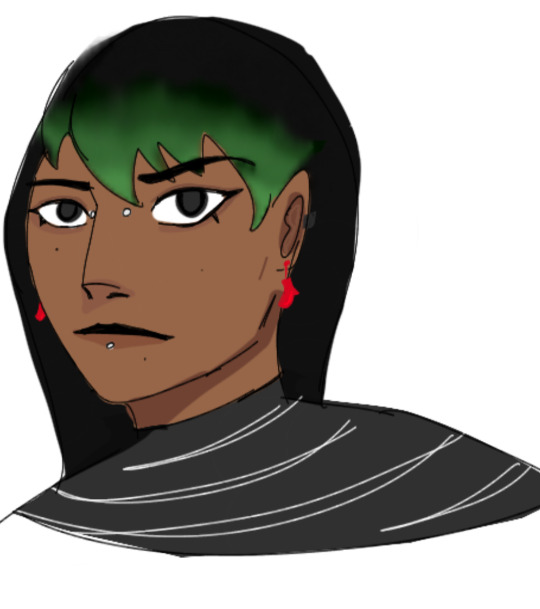

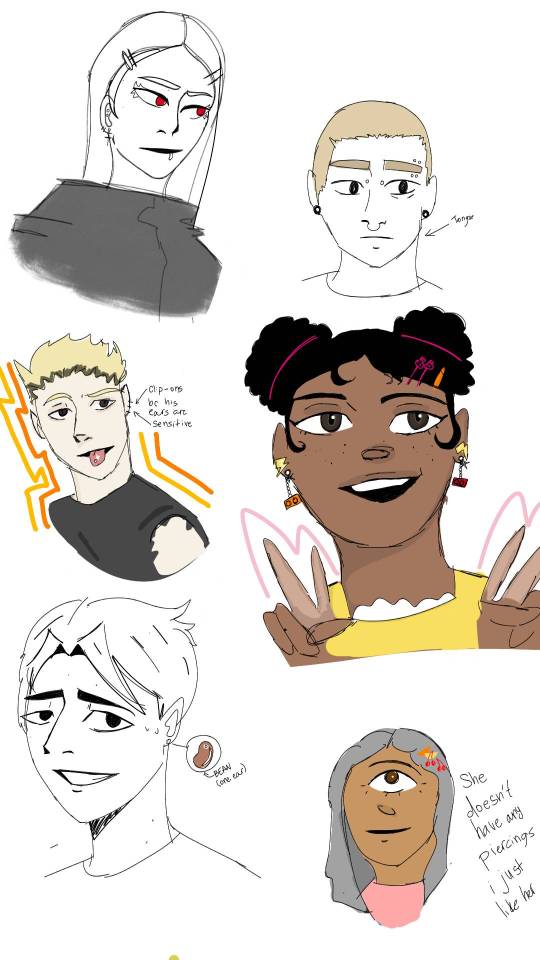
mona and ravan are separate bc i drew them after the hester and decided screw it. here are my loves (nevers with piercings). everyone better hype them up or im deleting my blog /j
#school for good and evil#ren doodles stuff#sge#the school for good and evil#anadil of bloodbrook#dot of nottingham#ravan of thicket tumble#vex. idk where hes from#mona of oz#archane of foxwood#brone#idk where hes from hes just brone#no but that would be so fucking funny. his name is just brone. no title just brone#hort of bloodbrook#i remember the whole ramayama bc of ravan but i cant remember brones name. go figure#its smth briar right? im overthinking this
24 notes
·
View notes
Photo

@donomar new hit already 36 millions organic Views! Very Simple, My Friends 🔥🤘🏽 #DDDDDD #donomar #latin #reggaeton #STARROCK #drinkchamps drinkchamps #ramayama #Ensendio (at Tap Link In Bio To Shop) https://www.instagram.com/starrockevents/p/BxNhcAgHSi4/?igshid=mzfter10j74f
0 notes
Photo

Official Video // Don Omar, Farruko - Ramayama
https://www.objetivoreggaeton.com/es/don-omar-es/official-video-don-omar-farruko-ramayama/
0 notes
Photo
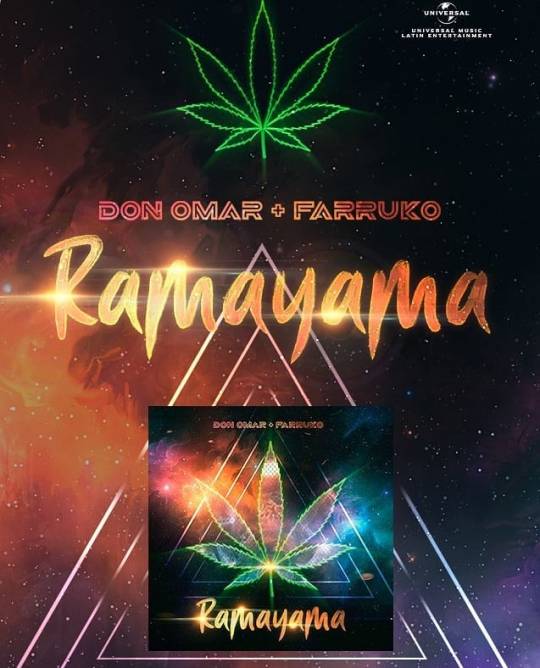
@donomar y @farrukoofficial presentan su nuevo sencillo #RAMAYAMA ESCUCHALA YA en nuestra #playlist en @spotify en http://bit.ly/PontikNew Todas las semanas musica nueva! Dale #follow a @pontikmedia en todas las plataformas Noticias de #Entretenimiento, #Música, Conciertos, Tendencias, Estilo de Vida y Moda - Pontik.com #tendencia #musician #music #musica #musico #musicos #newrelease #newvideo #musicanueva #newmusic #enews #justout #outnow #estilodevida #spotifyplaylist #spotifymusic @spotify @spotifymx @spotifybrasil @spotifylatam @spotifyspain #entertainmentnews #musicnews #instanews #pontik #newmusicalert #newmusicfriday #pontik #donomar #farruko https://www.instagram.com/p/Bwk8gezlUa0/?utm_source=ig_tumblr_share&igshid=1ptf2i6a608s0
#ramayama#playlist#follow#entretenimiento#música#tendencia#musician#music#musica#musico#musicos#newrelease#newvideo#musicanueva#newmusic#enews#justout#outnow#estilodevida#spotifyplaylist#spotifymusic#entertainmentnews#musicnews#instanews#pontik#newmusicalert#newmusicfriday#donomar#farruko
0 notes